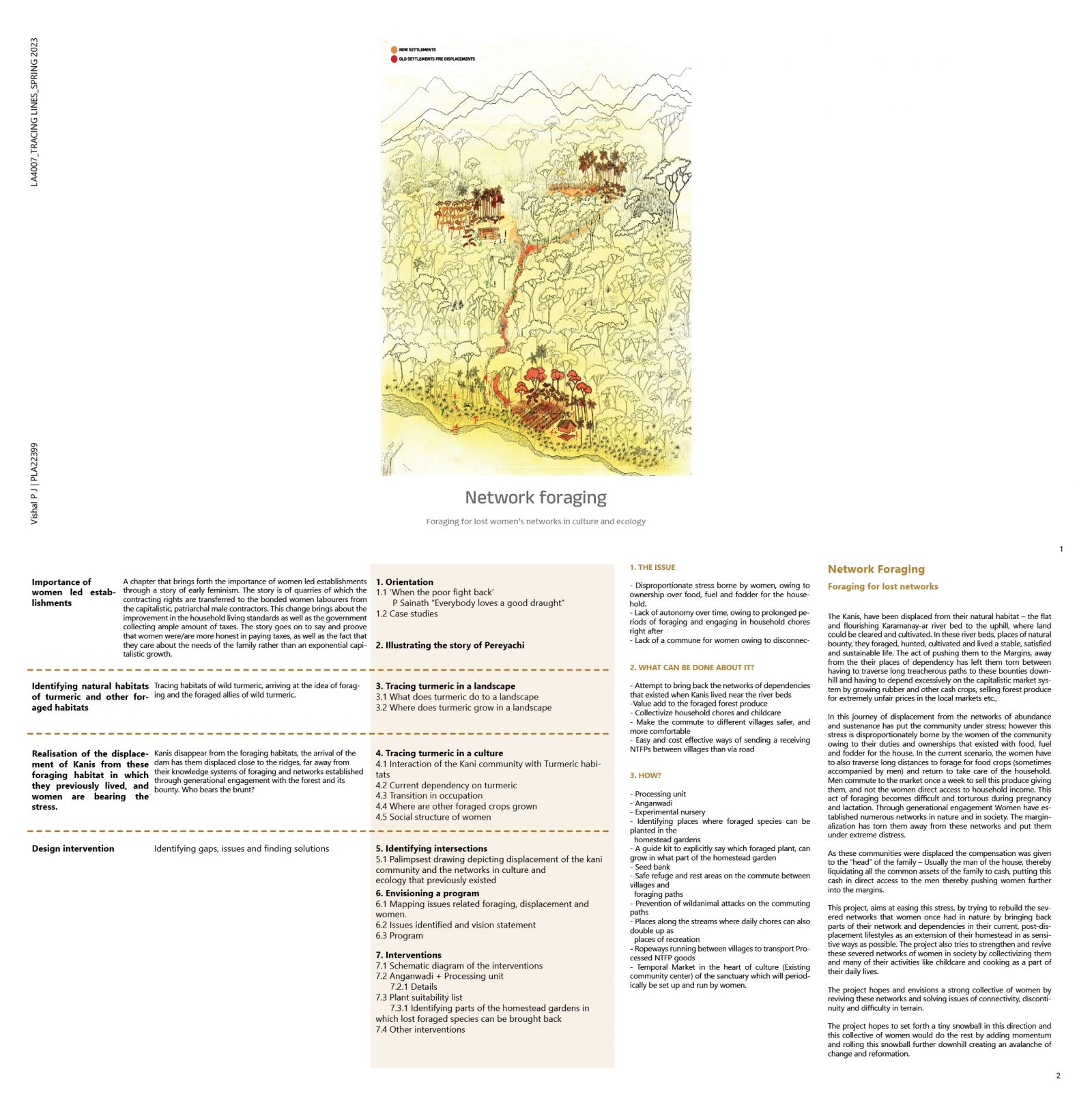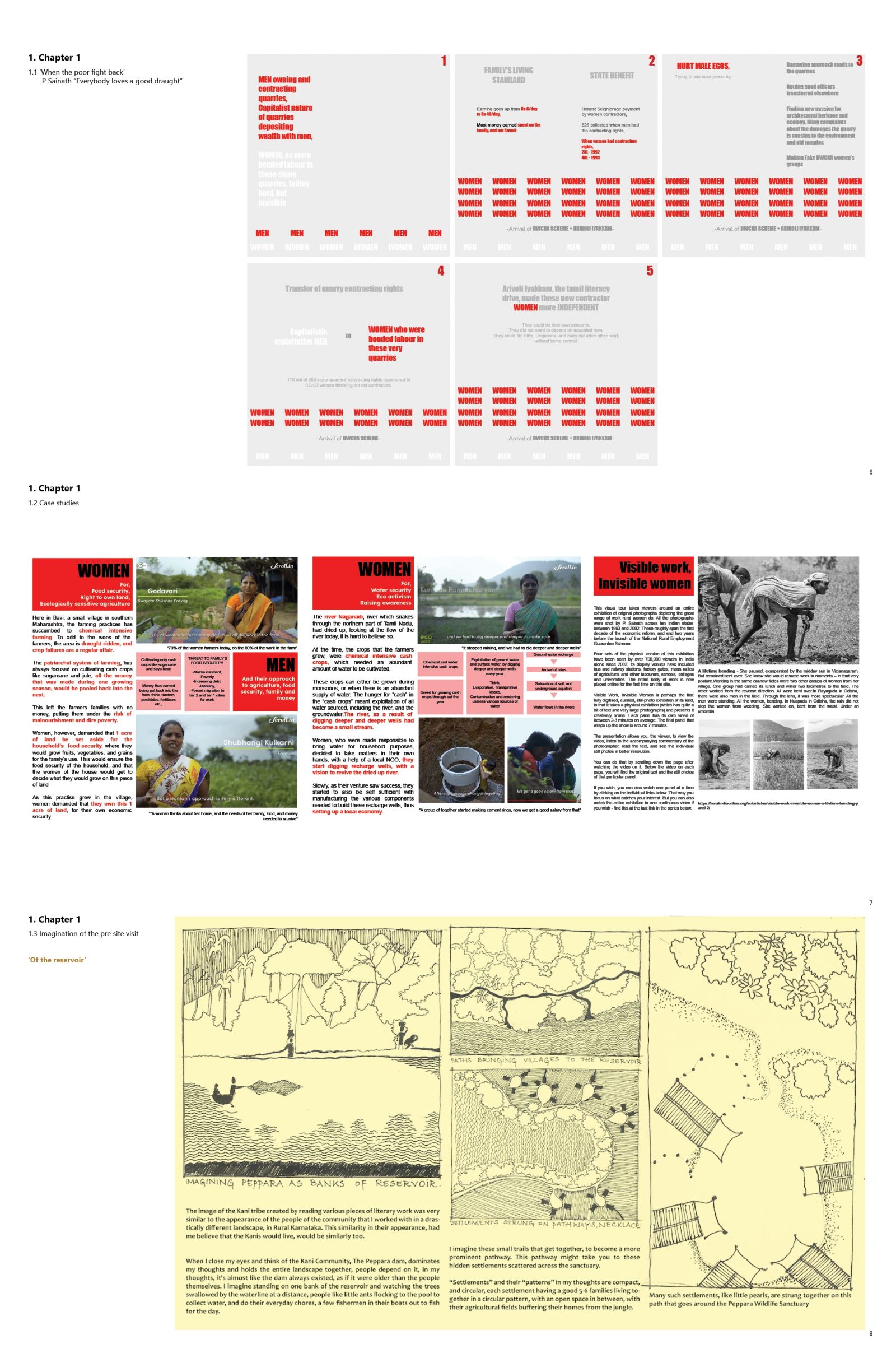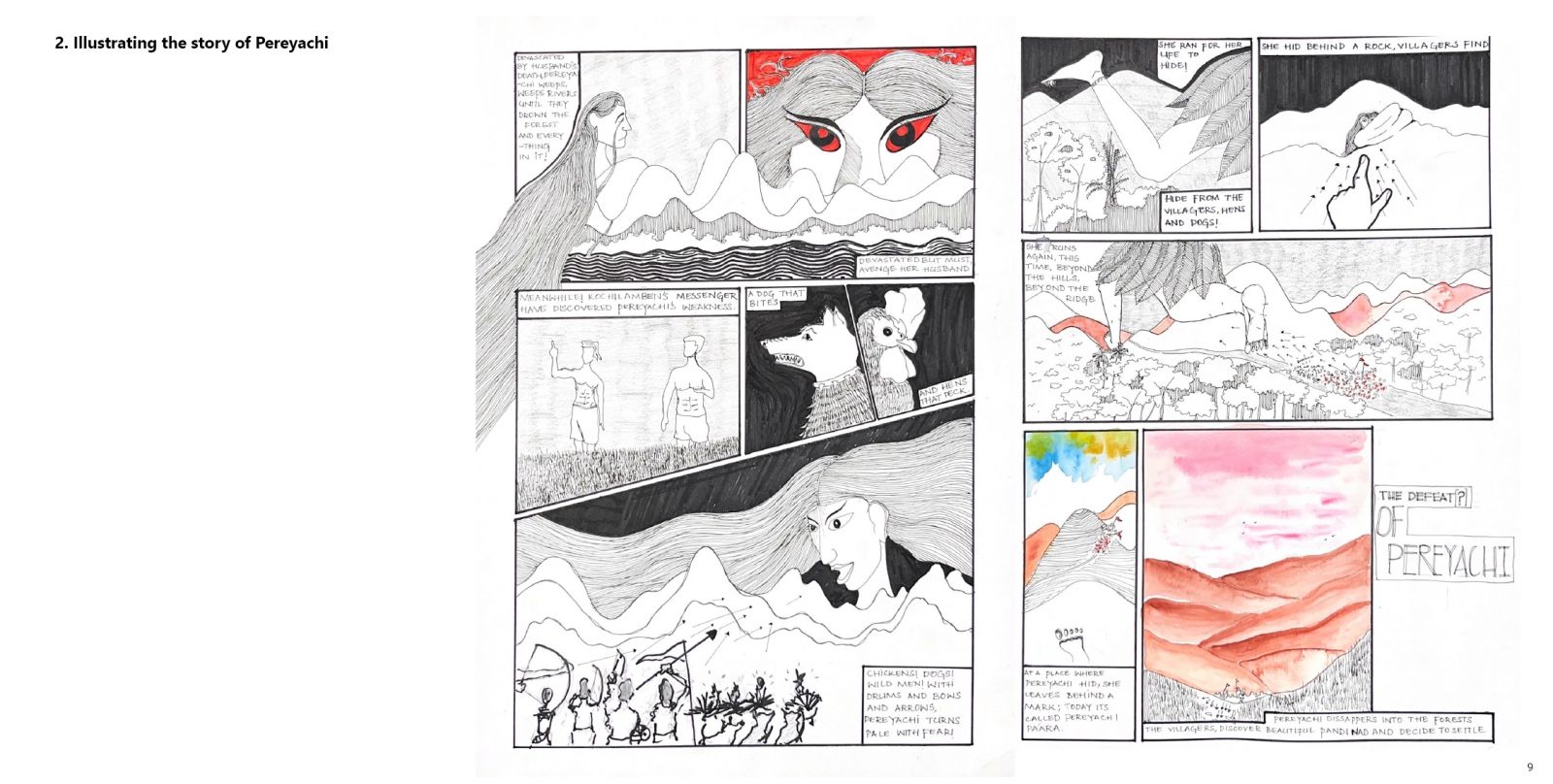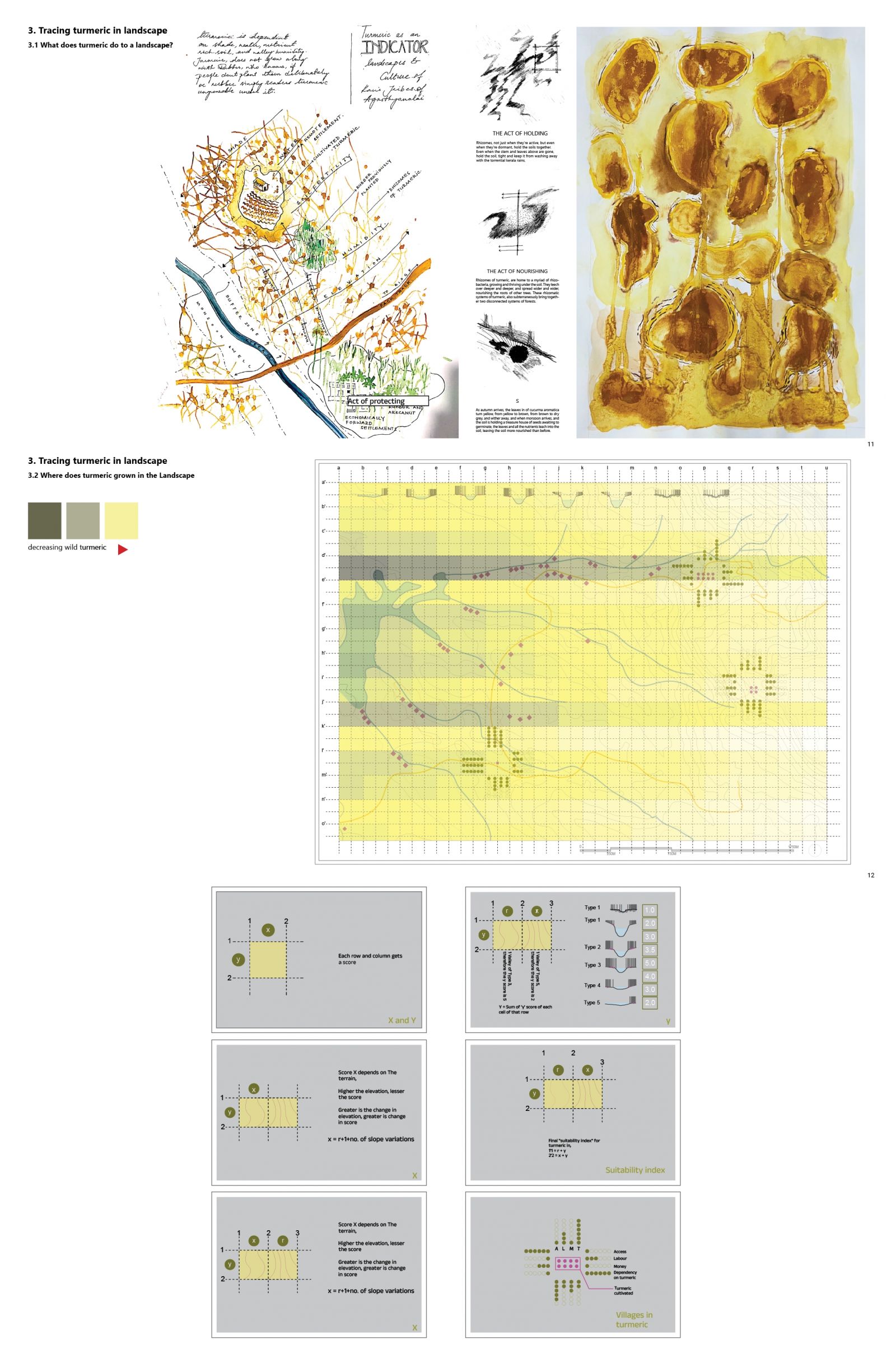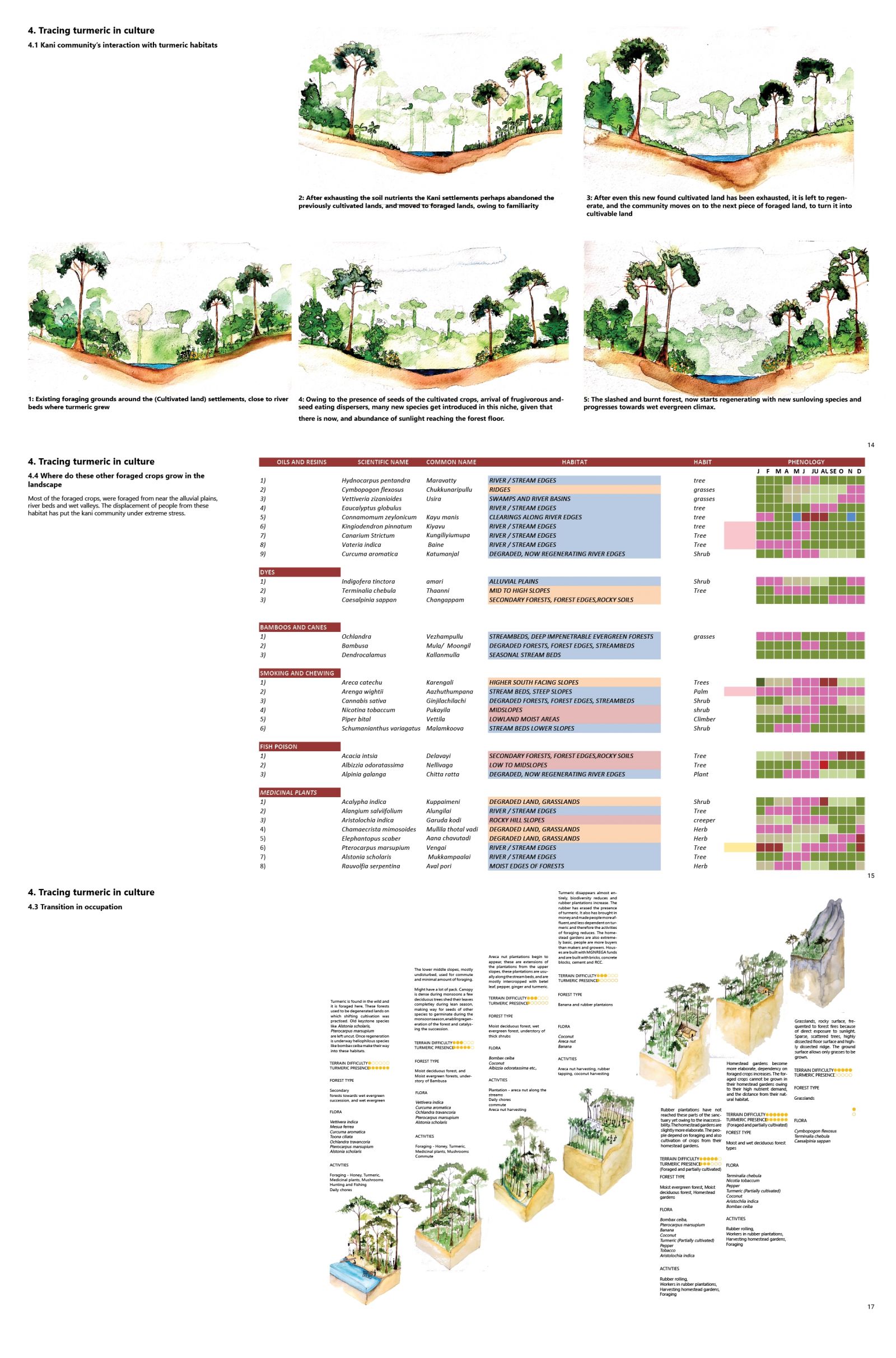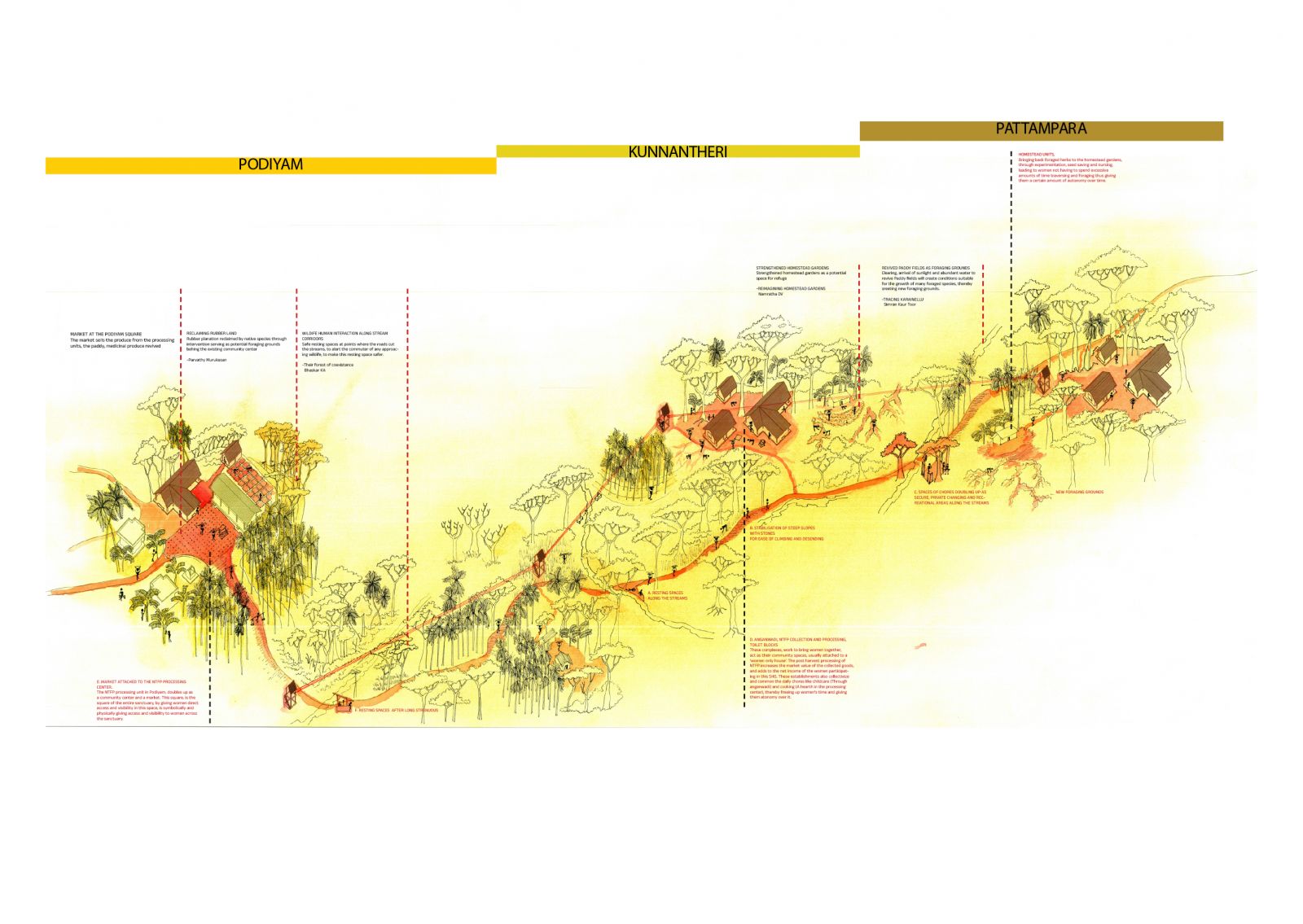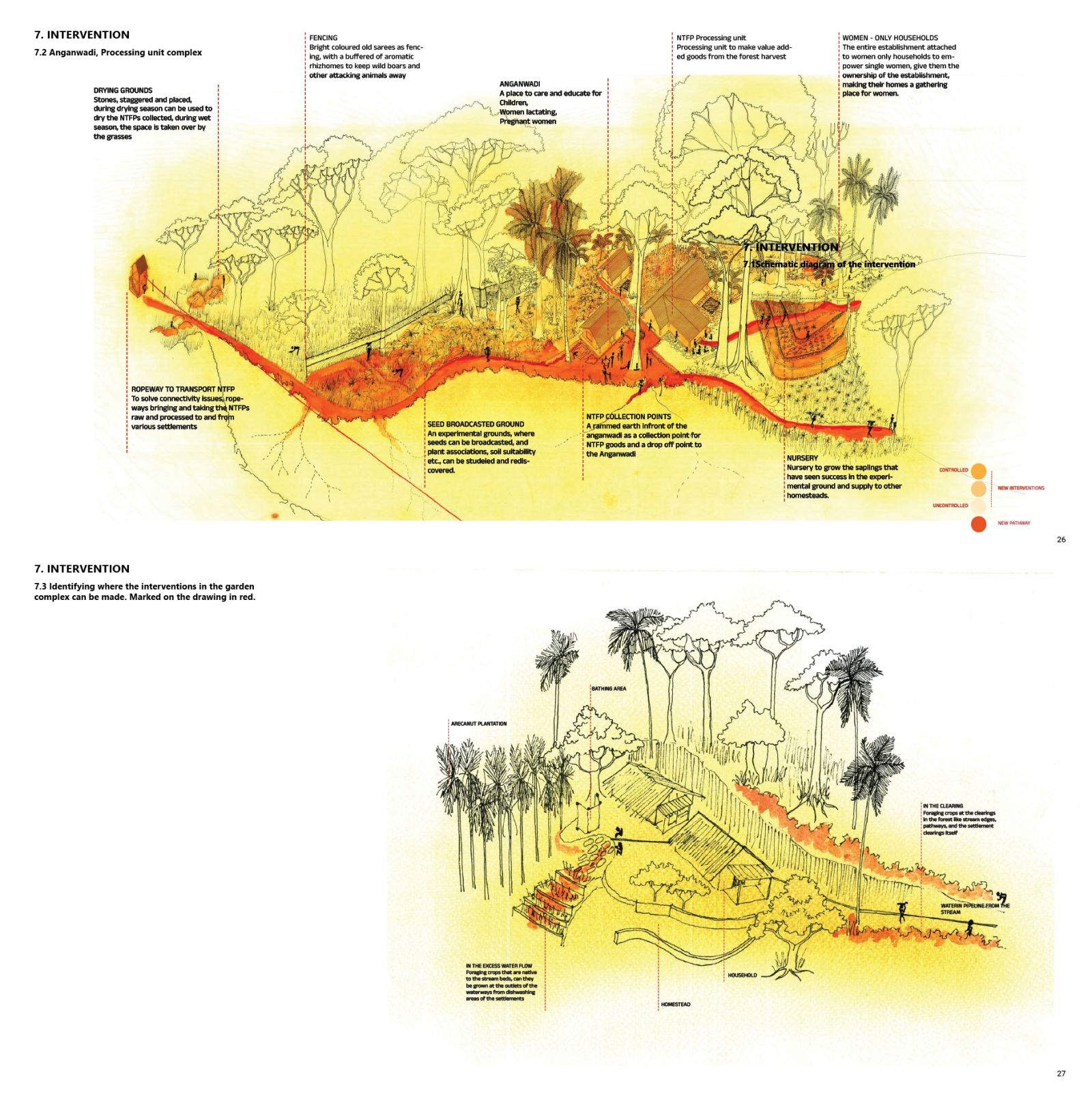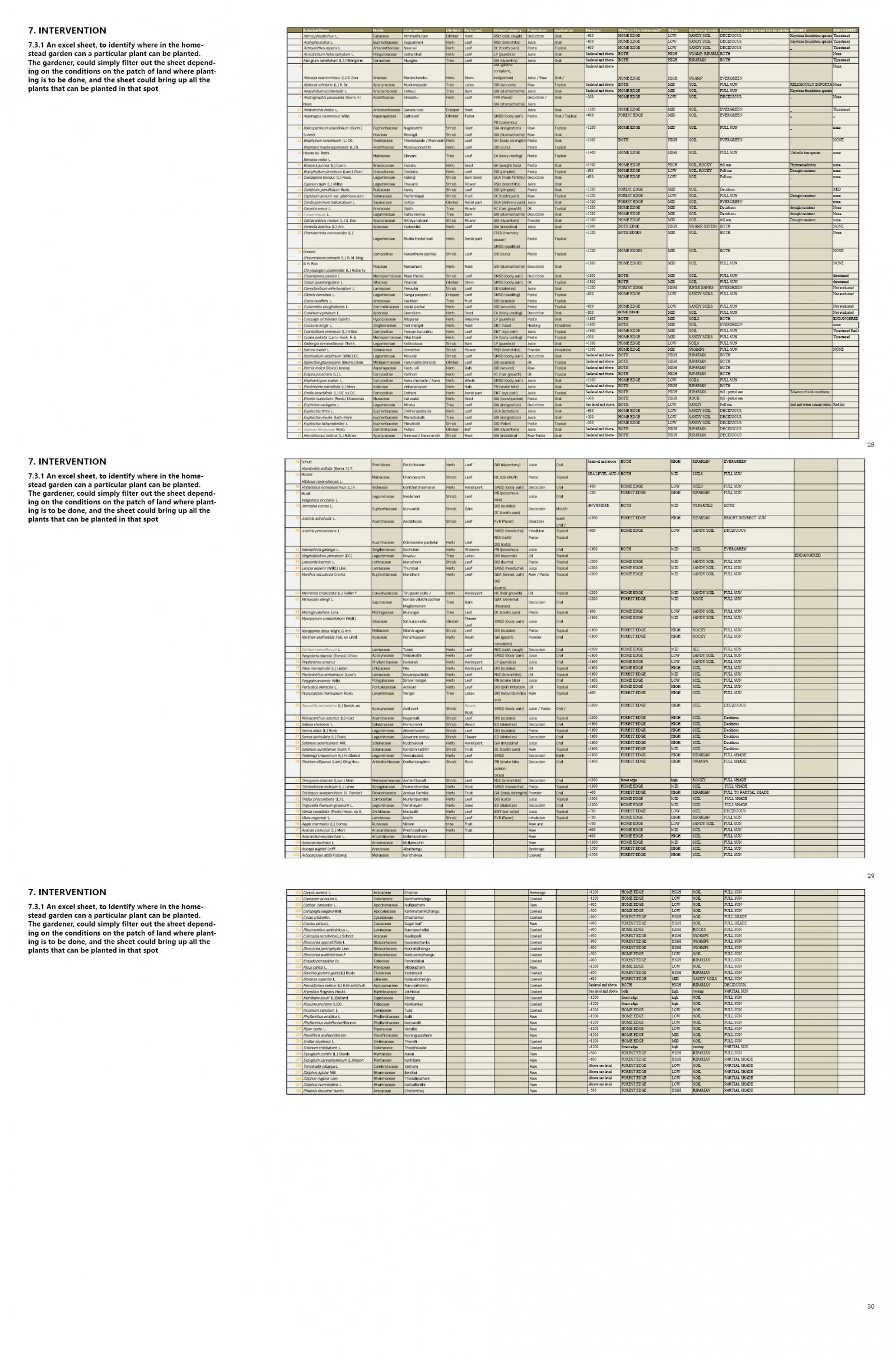- Student VISHAL P J
- Code PLA22399
- Faculty Architecture
- Unit L4 Studio Unit
- Tutor/s Divya Shah
- TA Sankalpa Patel
The Kanis, have been displaced from their natural habitat – the flat and flourishing Karamanay-ar river bed to the uphill, where land could be cleared and cultivated. In these river beds, places of natural bounty, they foraged, hunted, cultivated and lived a stable, satisfied and sustainable life. The act of pushing them to the Margins, away from the their places of dependency has left them torn between having to traverse long treacherous paths to these bounties downhill and having to depend excessively on the capitalistic market system by growing rubber and other cash crops, selling forest produce for extremely unfair prices in the local markets etc., In this journey of displacement from the networks of abundance and sustenance has put the community under stress; however this stress is disproportionately borne by the women of the community owing to their duties and ownerships that existed with food, fuel and fodder for the house. In the current scenario, the women have to also traverse long distances to forage for food crops (sometimes accompanied by men) and return to take care of the household. Men commute to the market once a week to sell this produce giving them, and not the women direct access to household income. This act of foraging becomes difficult and torturous during pregnancy and lactation. Through generational engagement Women have established numerous networks in nature and in society. The marginalization has torn them away from these networks and put them under extreme distress. As these communities were displaced the compensation was given to the “head” of the family – Usually the man of the house, thereby liquidating all the common assets of the family to cash, putting this cash in direct access to the men thereby pushing women further into the margins. This project, aims at easing this stress, by trying to rebuild the severed networks that women once had in nature by bringing back parts of their network and dependencies in their current, post-displacement lifestyles as an extension of their homestead in as sensitive ways as possible. The project also tries to strengthen and revive these severed networks of women in society by collectivizing them and many of their activities like childcare and cooking as a part of their daily lives. The project hopes and envisions a strong collective of women by reviving these networks and solving issues of connectivity, discontinuity and difficulty in terrain. The project hopes to set forth a tiny snowball in this direction and this collective of women would do the rest by adding momentum and rolling this snowball further downhill creating an avalanche of change and reformation.
